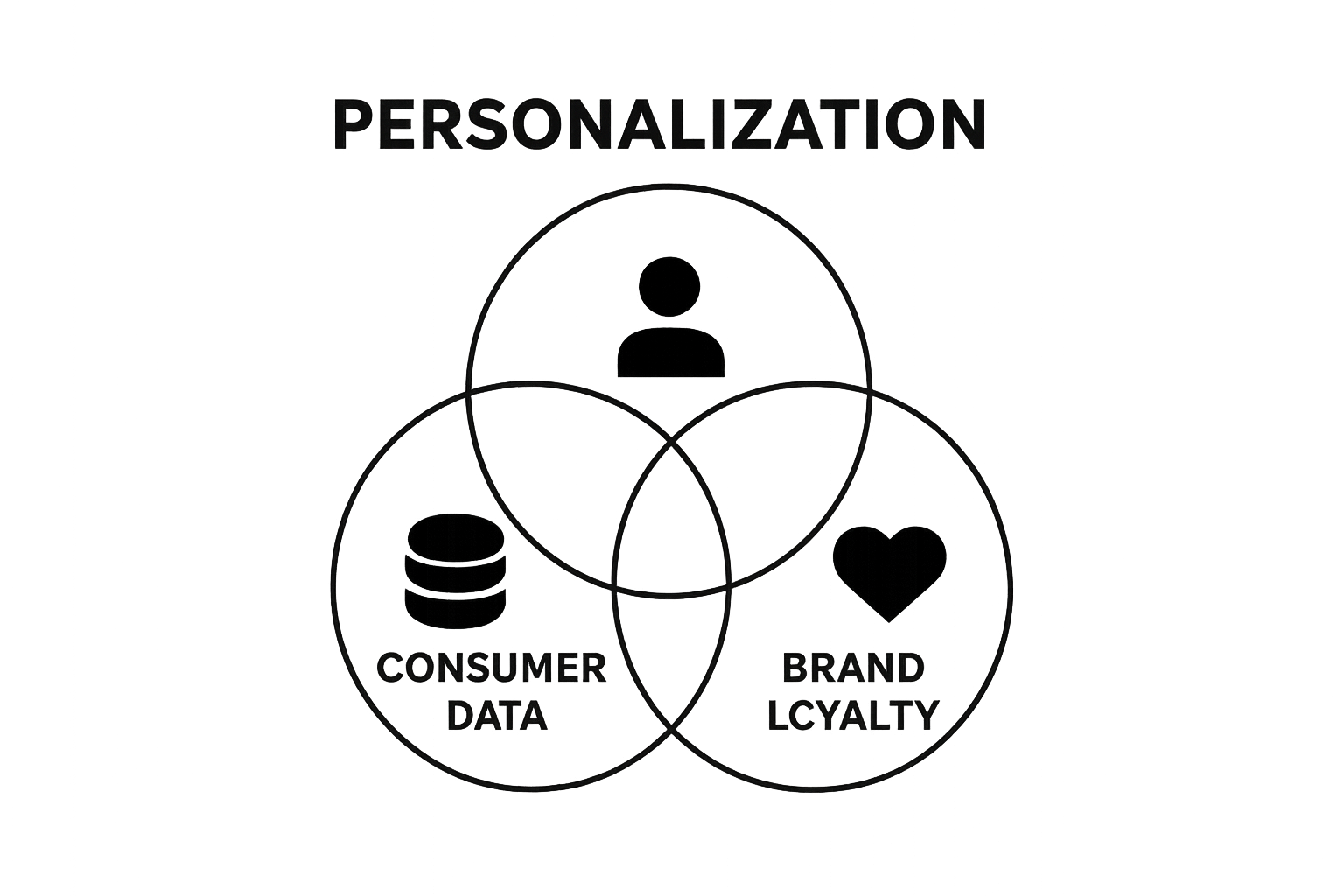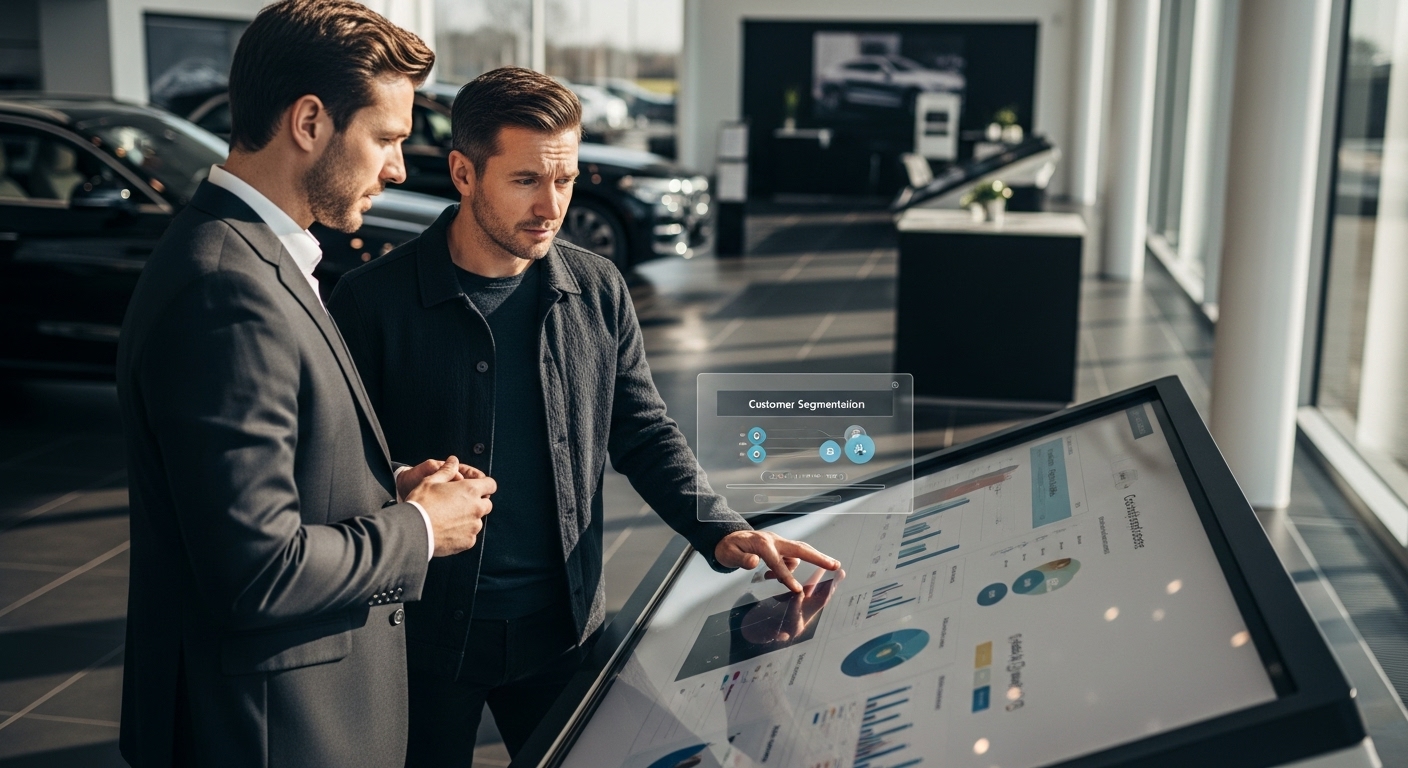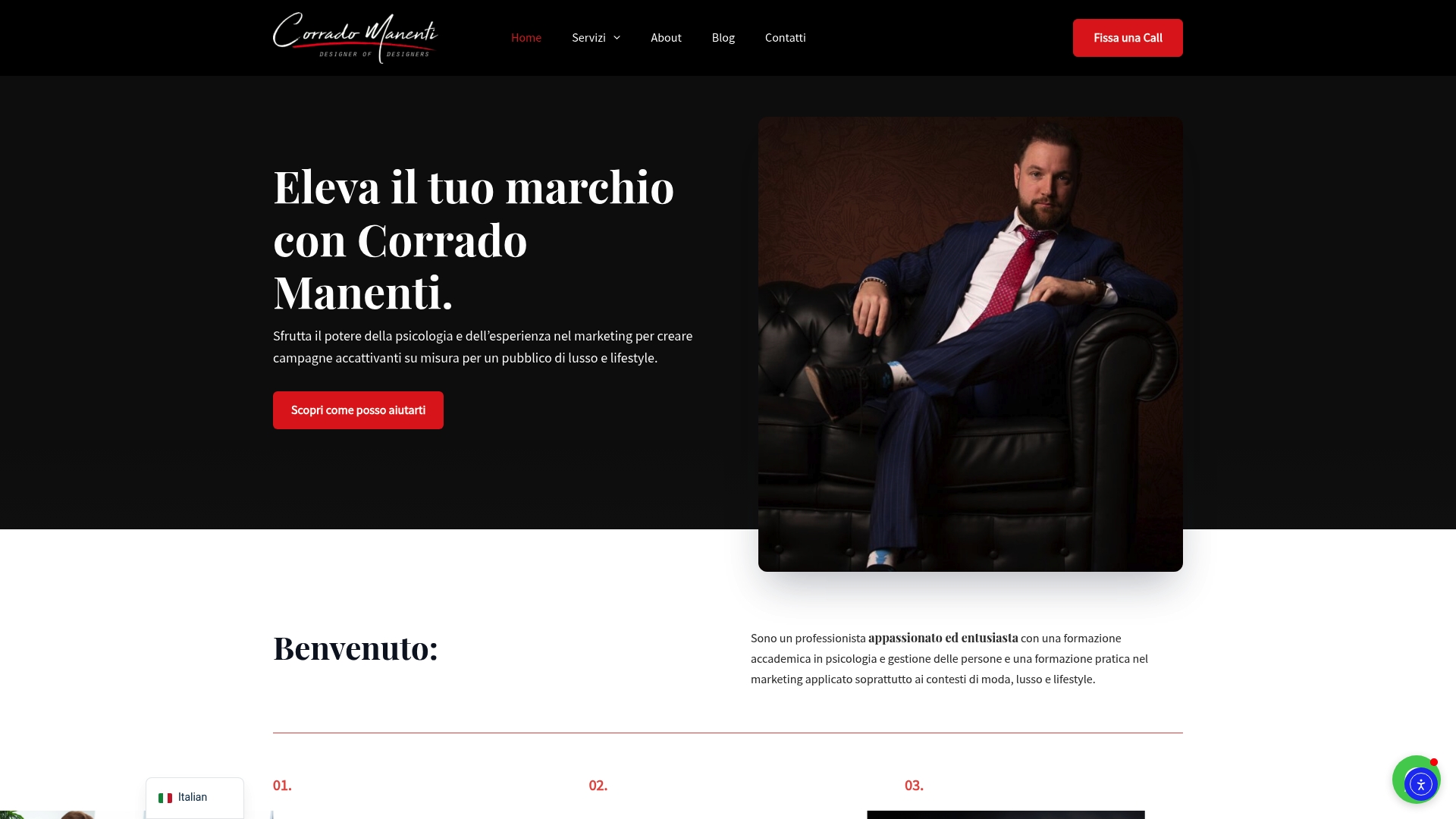Luxury brands are pouring millions into crafting unique experiences, but the real power play happens behind the scenes with data-driven marketing. Most people expect luxury marketing to be all about emotion and tradition. Yet the smartest brands are using sophisticated analytics to uncover what really motivates their customers and build profiles that go way beyond age or income. In fact, real-time personalization technology now enables brands to adjust their marketing for each customer on the fly, shattering old ideas about luxury being slow to adapt. This quiet revolution is changing everything about how exclusivity is delivered.
Table of Contents
- Understanding The Concept Of Data-Driven Marketing
- The Importance Of Data In Luxury Brand Strategy
- How Data Influences Consumer Behavior In Luxury Markets
- Key Tools And Techniques In Data-Driven Luxury Marketing
- Real-World Examples Of Successful Data-Driven Marketing
Quick Summary
| Takeaway | Explanation |
|---|---|
| Leverage comprehensive data collection | Gather data from diverse sources to create detailed customer profiles. |
| Utilize advanced analytics for insights | Employ sophisticated tools to interpret complex consumer data and behaviors. |
| Create hyper-personalized marketing strategies | Move beyond traditional messaging to tailor experiences for individual customers. |
| Employ predictive modeling techniques | Anticipate customer behaviors and trends before they occur through advanced analytics. |
| Focus on emotional and psychological drivers | Understand the nuanced motivations behind luxury purchases for effective engagement. |
Understanding the Concept of Data-Driven Marketing
Data-driven marketing represents a strategic approach that transforms how businesses understand, engage, and convert their target audiences by systematically utilizing consumer data and advanced analytical techniques. Unlike traditional marketing methods that relied on intuition or generalized assumptions, this approach enables brands to make precise, informed decisions based on actual consumer behaviors, preferences, and patterns.
The Core Principles of Data-Driven Marketing
At its essence, data-driven marketing is about leveraging quantitative and qualitative information to create more personalized, effective marketing strategies. Companies collect data from multiple touchpoints including website interactions, social media engagement, purchase history, and customer demographics. According to Harvard Business Review, this approach allows businesses to move from mass messaging to highly targeted communication that significantly improves return on investment.
Key components of data-driven marketing include:
- Comprehensive Data Collection: Gathering information from diverse sources to build comprehensive customer profiles
- Advanced Analytics: Using sophisticated tools to interpret complex datasets
- Predictive Modeling: Anticipating customer behaviors and preferences before they manifest
Transforming Marketing Strategy Through Data Insights
Data-driven marketing fundamentally shifts how organizations approach customer engagement. Instead of broadcasting generic messages, brands can now craft hyper-personalized experiences that resonate with individual consumer needs. This approach goes beyond simple demographic segmentation, diving deep into behavioral patterns, purchasing motivations, and potential future actions.
By analyzing granular data points, marketers can create more nuanced strategies that speak directly to specific customer segments.
The table below outlines the key components of data-driven luxury marketing, providing concise definitions and explanations for each to support a clearer understanding of their roles in modern brand strategy.
| Component | Definition | Role in Luxury Marketing |
|---|---|---|
| Comprehensive Data Collection | Gathering information from multiple consumer touchpoints | Builds detailed consumer profiles for targeted engagement |
| Advanced Analytics | Use of sophisticated software to interpret complex datasets | Reveals trends and drives data-informed decision-making |
| Predictive Modeling | Employing algorithms to forecast customer behaviors and preferences | Enables anticipatory marketing and trend identification |
| Customer Segmentation | Dividing consumers into highly refined groups | Allows precise tailoring of marketing messaging and experiences |
| Personalization | Creating unique, individualized experiences for each customer | Strengthens brand connection and enhances loyalty |
| Real-Time Personalization | Dynamic adjustment of content based on immediate interactions | Delivers hyper-relevant experiences in the moment |
The Importance of Data in Luxury Brand Strategy
Luxury brands operate in an increasingly complex marketplace where understanding customer expectations requires more than traditional marketing approaches. Data has become a critical strategic asset that enables brands to navigate sophisticated consumer landscapes and deliver exceptional personalized experiences.
Precision Marketing in the Luxury Ecosystem
Unlike mass market segments, luxury brands demand intricate understanding of their clientele. McKinsey research highlights that data-driven strategies are essential for maintaining brand exclusivity while meeting evolving customer preferences. The luxury market requires nuanced insights that go beyond demographic information, diving deep into lifestyle, aspirational values, and behavioral patterns.
Key strategic advantages of data in luxury marketing include:
- Consumer Segmentation: Creating highly refined customer profiles
- Personalization: Designing unique experiences tailored to individual preferences
- Predictive Positioning: Anticipating emerging trends before they become mainstream
Transforming Luxury Brand Intelligence
Data transforms luxury brand intelligence by providing unprecedented visibility into customer motivations. Sophisticated analytics allow brands to understand not just what customers purchase, but why they make specific choices. This deeper comprehension enables brands to craft narratives and experiences that resonate on an emotional level.
Moreover, data helps luxury brands understand luxury brand storytelling by revealing the intricate connections between brand perception, customer experience, and long-term loyalty. By systematically analyzing consumer interactions across multiple touchpoints, brands can create more meaningful, targeted engagement strategies that preserve their exclusive positioning while adapting to changing market dynamics.
How Data Influences Consumer Behavior in Luxury Markets
Consumer behavior in luxury markets represents a complex interplay of emotional, psychological, and socioeconomic factors. Data provides unprecedented insights into these intricate decision-making processes, enabling brands to understand the nuanced motivations behind luxury consumption beyond traditional demographic analysis.
Psychological Profiling Through Advanced Analytics
Nielsen Consumer Research reveals that luxury consumers make purchasing decisions through a combination of rational and emotional triggers. Advanced data analytics allow brands to map these complex psychological landscapes by tracking behavioral patterns, aspiration levels, and personal value systems. This granular understanding transforms how luxury brands approach consumer engagement.
Key psychological insights derived from data include:
- Emotional Drivers: Understanding deep-seated motivations behind luxury purchases
- Social Signaling: Analyzing how consumers use luxury products to communicate status
- Personal Identity: Tracking how luxury choices reflect individual self-perception
Predictive Modeling in Luxury Consumer Journeys
Data enables brands to construct highly sophisticated consumer journey maps that anticipate potential interactions and preferences. By analyzing multiple touchpoints including digital interactions, purchasing history, and lifestyle indicators, brands can create predictive models that forecast future consumption patterns.
Moreover, read more about luxury consumer behavior insights to understand how microtargeting strategies are revolutionizing luxury marketing. These data-driven approaches allow brands to move beyond generic segmentation, creating hyper-personalized experiences that resonate with individual consumer expectations and aspirational profiles.
Key Tools and Techniques in Data-Driven Luxury Marketing
Data-driven luxury marketing requires sophisticated technological infrastructure and advanced analytical methodologies that transcend traditional marketing approaches. These tools enable brands to transform raw consumer data into strategic insights that drive personalized engagement and brand loyalty.

Advanced Analytics and Machine Learning Platforms
Gartner Research emphasizes that modern luxury brands must leverage machine learning algorithms capable of processing complex, multidimensional consumer data. These platforms analyze intricate behavioral patterns, revealing nuanced preferences that conventional analytics might miss.
Critical technological tools in luxury data analytics include:
- Predictive Modeling Software: Forecasting consumer trends and purchase behaviors
- Customer Data Platforms (CDPs): Consolidating consumer interactions across multiple touchpoints
- AI-Powered Segmentation Tools: Creating hyper-personalized consumer profiles
Real-Time Personalization Technologies
Luxury brands are increasingly adopting advanced real-time personalization technologies that dynamically adjust marketing experiences based on immediate consumer interactions. These tools enable instantaneous content customization, ensuring that every communication feels uniquely crafted for individual consumers.
Explore the latest luxury marketing trends to understand how emerging technologies are revolutionizing customer engagement strategies. By integrating sophisticated data analysis with cutting-edge technological solutions, luxury brands can create seamless, anticipatory experiences that elevate customer relationships beyond traditional transactional interactions.
Real-World Examples of Successful Data-Driven Marketing
Data-driven marketing has transformed how luxury brands interact with their most discerning customers, creating unprecedented opportunities for personalized engagement and strategic positioning. These real-world examples demonstrate the profound impact of sophisticated data analytics on brand communication and consumer relationships.
Luxury Fashion and Personalization Strategies
Harvard Business Review highlights how leading fashion houses leverage data to create highly personalized customer experiences. Brands now utilize advanced algorithms to track individual preferences, purchase history, and even social media interactions to craft tailored marketing narratives that resonate with specific customer segments.
Key successful data-driven marketing approaches include:
- Predictive Wardrobe Recommendations: Analyzing past purchases to suggest future collections
- Digital Fitting Experiences: Using customer body data for precise sizing recommendations
- Exclusive Event Invitations: Targeting customers based on precise lifestyle and consumption patterns
Precision Targeting in Luxury Automotive and Hospitality
Luxury sectors beyond fashion have also embraced data-driven strategies with remarkable success. High-end automotive brands and exclusive hospitality groups now use sophisticated data models to understand customer aspirations, creating hyper-personalized engagement strategies that transcend traditional marketing approaches.
Explore automotive marketing innovations to understand how data transforms customer interactions. By converting complex data points into meaningful experiences, luxury brands can create emotional connections that go far beyond transactional relationships, establishing long-term loyalty and brand appreciation.
Below is a comparison of traditional luxury marketing versus data-driven luxury marketing, highlighting key differences in approach, strategy, and customer engagement.
| Aspect | Traditional Luxury Marketing | Data-Driven Luxury Marketing |
|---|---|---|
| Approach | Relies on intuition and legacy segmentation | Uses data analytics for evidence-based decisions |
| Customer Segmentation | Demographic-based (age, income, location) | Behavioral and psychographic-based segmentation |
| Personalization | Limited, often broad messaging | Hyper-personalized to individual consumer preferences |
| Speed | Slow adaptation to market trends | Real-time adaptation and agile campaign adjustments |
| Engagement | One-way, brand-centric communication | Two-way, interactive, experience-driven connections |

Turn Data-Driven Luxury Marketing Into Your Competitive Edge
Are you struggling to translate complex customer data into meaningful luxury brand engagement? Many brands realize that traditional intuition no longer fuels growth. The article explored how precision, psychological insight, and real-time analytics are now essential in the high-end market. Your ability to harness these principles will define your success.
Explore Marketing Fashion Strategies

If you want to fully unlock the power of data-driven luxury marketing, partner with an expert who brings together in-depth psychological analysis and proven digital innovation. Corrado Manenti offers tailored consulting that bridges the gap between consumer insights and actionable strategies. Make your next move count—visit Corrado Manenti’s website to discover how you can achieve measurable growth and true brand distinction now.
Frequently Asked Questions
What is data-driven luxury marketing?
Data-driven luxury marketing is a strategic approach that utilizes consumer data and advanced analytics to create personalized marketing experiences within the luxury sector. It moves beyond traditional marketing methods to make informed decisions based on actual consumer behaviors and preferences.
How does data influence consumer behavior in luxury markets?
Data influences consumer behavior by providing insights into the emotional, psychological, and socioeconomic factors that drive luxury purchases. Brands use data to understand customer motivations, leading to more effective and personalized marketing strategies.
What tools are used in data-driven luxury marketing?
Key tools in data-driven luxury marketing include predictive modeling software, customer data platforms (CDPs), and AI-powered segmentation tools. These technologies help brands analyze consumer data to create tailored experiences and anticipate future buying behaviors.
Why is personalization important in luxury marketing?
Personalization is crucial in luxury marketing because it allows brands to create unique experiences that resonate with individual consumers. This precision helps build stronger emotional connections, reduces marketing waste, and enhances customer loyalty.



